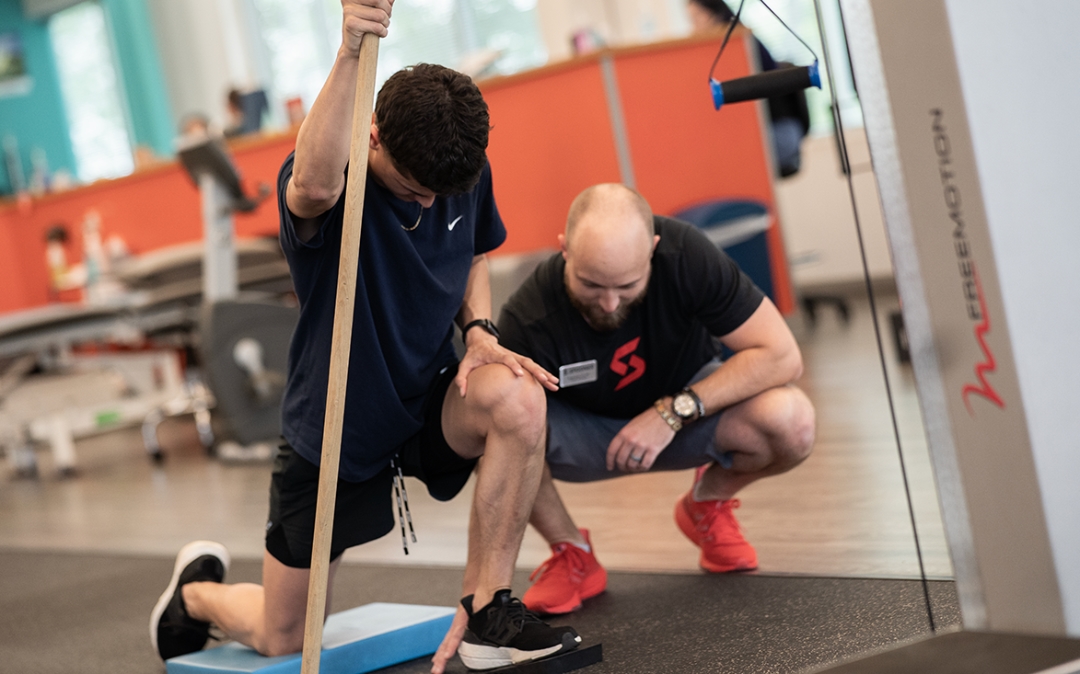Track season is HERE! Before you put on your spikes and head to the starting line, it’s important to develop base strength to perform your best and reduce your risk of injury.
Running is incredibly demanding on your body. With each stride, the ground reaction force is increased. This strain is absorbed on your lower extremity joints and tissues, so, if you overload on training too quickly, an overuse injury can occur. It’s important to make sure your body is ready for the track so you can reduce your risk of injury. Building up your physical, endurance, and cardiovascular strength will allow you to be efficient and effective while training this season.
Common Deficits in Track Athletes
Running specifically requires you to perform a single motion over and over again in the sagittal- think front and back- plane. There are common injuries in runners, such as hamstring strains and knee injuries, however, there are weaknesses that are the underlying reason behind these injuries that need to be addressed.
Hip Internal Rotation
Hip mobility is vital for your knees and ankles to function properly while running. Inadequate hip internal rotation will cause you to compensate as you load your stride leg. Along with this, you may experience muscle imbalances due to the compensations in your knee and ankle.
Ankle Dorsiflexion
Your foot and ankle are the first line of defense to take the load of your stride. If your ankle cannot move through its full range of extension and flexion, it will cause instability up the chain. This will also lead to an improper loading in your calf muscle. This will make it harder to generate enough power to spring into your next stride.
Glute and Hamstring strength
It’s common for track athletes to be quad dominant. However, when you are quad dominant, there can be muscle imbalances in your glutes and hamstrings. This can lead to a potential hamstring injury. Glute weakness also impacts the way you run. When this happens, your knee takes on much more stress, which can lead to an injury.
Exercises for Runners
Strengthening these common weaknesses in track athletes can help you reduce your risk of injury while also improving your performance in competition.
Hip Mobility
Half kneeling 3-way knee driver with overpressure.
-
- Maintain upright posture, use hand(s) to apply extra pressure while driving the knee forward. Keep heel down throughout the movement.
Lower Extremity and Core Strength
Hip CARs (controlled articular rotations)
-
- This exercise helps open up the joint by moving into end ranges of all planes of motion the hip needs to go through for optimal performance.
Half kneeling tri-planar stepping with UE reach.
-
- Use this for hip and spinal mobility/flexibility in closed chain position.
LE Strengthening/Ankle Stability
Single leg RDL with kettlebell into snatch to shoulder height.
-
- Move slower going down and quicker coming back up, maintaining balance and control throughout the movement.
Core and LE Strengthening/Ankle Stability
Single leg stance (with contralateral toe touch if needed for balance) pallof press.
-
- Keep chest up and maintain straight movement with arms through midline when pressing out and back in.
A Spooner physical therapist is on your team to help you on and off-season. Schedule an appointment today!

